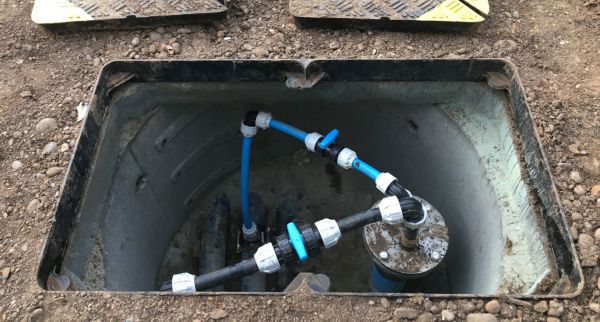What are Ejectors?
Where groundwater must be lowered more than six metres below ground in lower permeability soils, such as silt or fine sand, ejectors often offer the best dewatering solution. At depths greater than 45-50m, ejector systems can become inefficient, often making a vacuum deepwell system more appropriate.
Ejectors occupy a niche in the dewatering industry, where pumping levels are too deep for wellpoints, but well yields are too low to allow the use of electric submersible pumps alone (as with classic deepwells).

Ejector wells are drilled and installed, just like deepwells, but they differ from them in the way that the water is extracted. Unlike electric submersible pumps – which can quickly burn out if run in a dry borehole – ejectors can pump air and water mixtures without any issues, and if the top of the borehole is sealed, then a vacuum produced by the pumping action will improve the gravity drainage towards the well as a result of the creation of the vacuum-assisted drainage path.
Ejector systems require both a high-pressure supply and low pressure return header main following the line of wells. Project Dewatering offers clients the choice of either a double pipe or concentric pipe ejector system to suit the site conditions.
Ejectors require a greater level of experience to successfully operate than traditional wellpoint and deepwell systems, and can often require more regular maintenance, due to the loss of performance and efficiency caused by naturally occurring iron-related bio-fouling. Project Dewatering has a wealth of experience in the installation, monitoring, control and maintenance of these systems, ensuring drawdown requirements are met and sustained throughout the course of the dewatering process.

